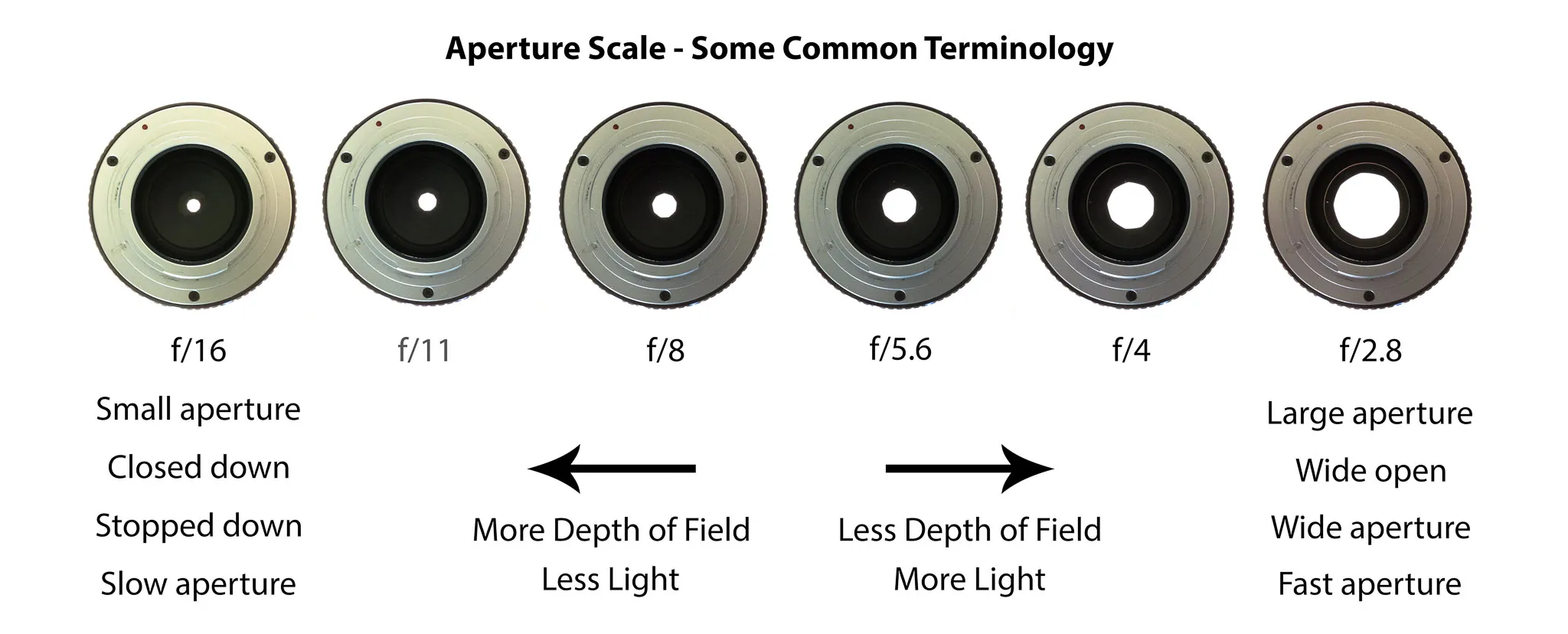Aperture is quite literally defined as a hole, or opening. In photography, aperture is often used interchangeably with the term F-Stop. While we know that light has to enter the lens before striking the film or sensor, the light also has to enter an aperture that is located in the rear of the lens.
The aperture in a lens has two primary functions:
- The aperture controls how much light passes between the lens and the sensor. A smaller aperture (hole) allows less light to reach the sensor. A larger aperture allows more light to reach the sensor. For photographers who love shooting in low-light situations, lenses that have very wide apertures are their best friends because they allow more light to pass through the lens. These "fast" lenses are proportionally more expensive.

- The aperture also controls "depth of field". Lenses will focus on a subject at a specific distance. However, even if a subject at 10 feet away is the focus point, there CAN be a larger range of the image that is in focus. This is referred to as the depth of field. A small aperture (like f/11) will create a larger depth of field and more of the image will be in focus. A wide aperture (like f/2) will create a shallow DOF and a much smaller range of the image will be in focus. Photographers use DOF as a tool to intentionally create portions of the image that are in focus or out of focus, directing the viewer through the image with intent.
